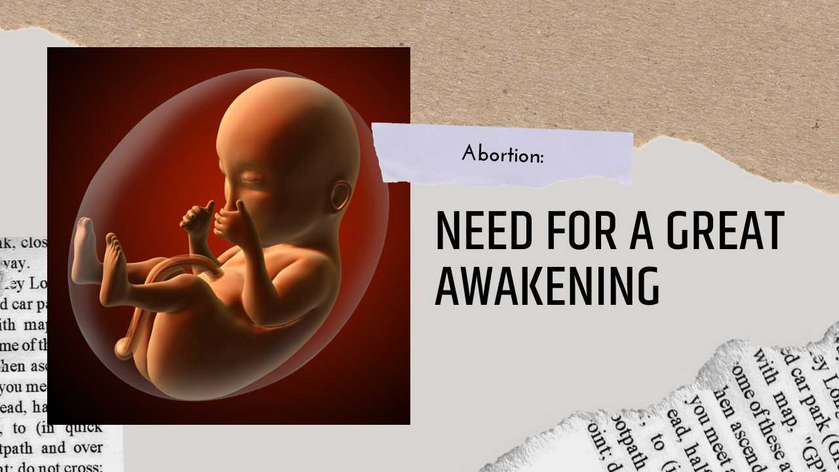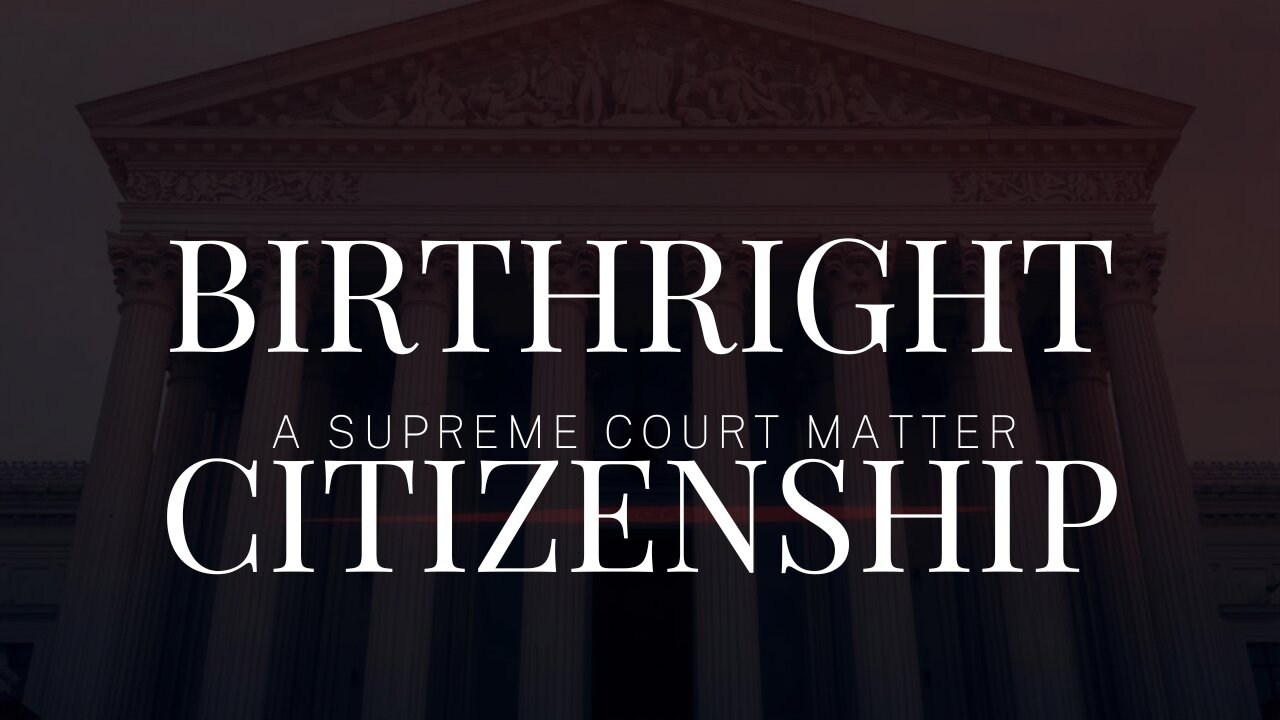Abortion is in the news once again, affecting elections and judicial process alike. Now a new piece in The New York Times, and at least one of its supporting documents, illustrate the serious problem with the abortion debate today. Once again, courts, political consultants, and commentators have forgotten the most important person in the debate: the unborn child. Until someone in authority reminds them of the unborn child, more unborn children will die. And each of those deaths brings our society closer in temperament to Germany under the Nationalistich Sozialistich Deutsche Arbeiters Partei.
Current state of abortion law
The Supreme Court, in 2022, removed the “penumbras” and “emanations” that protected abortion at any stage at the federal level. Dobbs v. Jackson Women’s Health Organization, 597 U.S. 215 (2022). Since then, the States within the United States have divided themselves between pro-abortion and pro-life; any middle ground is vanishing. NBC News’ interactive abortion map tells us the current state of the law in each State. Fourteen States either ban it or have seen the last clinic close. Eight more restrict it at least after fifteen weeks. The rest – a majority – make it legal, and protect it.
The off-year Election of 2023 turned into “The Abortion Election,” in part by reason of the failure of the Republican National Committee to support candidates who might have argued forcefully for the protection of human life at all stages. Ohio has constitutionalized abortion on demand, at any stage, for any reason or no reason. Virginia, already an abortion tourist trap, now has its General Assembly fully in Democratic hands. Democratic Senate and House of Delegates Leadership plan to pass on first reading a similar constitutionalization of abortion on demand.
The Texas abortion ban and its challenge
Texas has a near-total ban on abortion, and is in a unique spot. The only neighboring abortion tourist trap State to it is New Mexico. But most of Texas’ population lives across the State from it, in the Texas Triangle. That is no small consideration, because Texas has the largest land area of the forty-eight contiguous States. (In fact it has more than half again as much area as its next runner-up, California.) Moreover Texas is spread out, so that overland travel distances are great. So women have a choice:
Abandon the Nineteen Sixties retrograde “Swinging Singles” lifestyle, or:
Have the children that result from that lifestyle.
Texas has its “Baby Moses Law” that lets women bring babies to hospitals, fire stations, or paramedical stations. Staff will ask no questions beyond a family or medical history. But that, evidently, isn’t good enough for women who – married or not – wish to decouple intimacy from reproduction. So Meidas Touch Network reported Friday (December 15) that 51 Texas businesses signed on to a friend-of-the-court brief by an online dating site, supporting a lawsuit by 22 women to overturn Texas’ ban on abortion. Texas v. Zurawski, Docket No. 23-0629, argued November 28, 2023 before the Texas Supreme Court. Bumble, the dating site, says that abortion bans harm business recruitment and cramp women’s lifestyles.
Evidence in the Zurawski case:
As evidence they have a study from Ms. Magazine saying the debate affects their moving preferences. The report reads in salient part:
The Supreme Court overturning of Roe v. Wade has already made a dramatic impact on young women voters in battleground states as they plan for the future. Over half (53%) of young women voters have had their plans affected in some way: they have either considered moving to a state where abortion is protected (28%) or they’re making plans to move to a state where abortion is protected (16%); they have declined a job in a state where abortions are banned (10%) or have looked for jobs in states where abortion is protected (10%) as a result of the Supreme Court overturning Roe v. Wade.
And apparently, Party affiliation – or the lack of it – makes little or no difference. But the study talks about battleground States, which it neither lists nor defines. Texas isn’t a battleground State, regardless of the wishful thinking of ultra-death-cult publications like Ms. The chief “battle” in Texas concerns whether Texas will secede from the Union and reclaim its original sovereign national identity. More to the point: if 53 percent of women in these “battleground States” are that obsessed with protecting their right to destroy the products of their self-prostitution, 47 percent won’t.
Meidas Touch also mentions an Institute for Women’s Policy Research estimate that the abortion ban has cost Texas $15 million. This represents taxes uncollected from women who either don’t work outside the home or move out-of-State (or don’t move in).
The mifepristone case
In the middle of this drama, the case of Alliance for Hippocratic Medicine et al. v. U.S. Food and Drug Administration and Danco Laboratories is now before the Supreme Court. The Fifth Circuit Court of Appeals has affirmed a ruling by Judge Matthew Kacsmaryk of the U.S. District Court for the Northern District of Texas (Amarillo Division) that the FDA erred in placing this abortifacient on the market, and should take it off. So the Supreme Court will now hear an argument that those doctors lack standing. To be sure, the doctors claimed only their own emotional distress in treating women who had taken the abortion pill and regretted it. No one is claiming to act or speak for those unborn children who lost their lives when their mothers decided to poison themselves.
While those 51 businesses were signing on to that sloppy, weakly supported friend-of-the-court brief, The New York Times published a report claiming inside knowledge of how Dobbs v. Jackson Women’s came to be argued, then decided, as it was.
The Times piece
The Times begins with the passage of the Mississippi Gestational Age Act of 2018. That law made it unlawful to perform an abortion after 15 weeks. Mississippi’s solons reasoned that, after that time, ending a pregnancy is a gruesome, risky business for the mother. The Jackson Women’s Health Organization, the last of Mississippi’s abortion clinics, immediately sued. Jackson Women’s Health Organization v. Currier, 3:18-cv-00171-CWR-FKB.) In his order granting summary judgment, Judge Carlton W. Reeves of the U.S. District Court for the Southern District of Mississippi said:
The State chose to pass a law it knew was unconstitutional to endorse a decades-long campaign, fueled by national interest groups, to ask the Supreme Court to overturn Roe v. Wade. This Court follows the commands of the Supreme Court and the dictates of the United States Constitution, rather than the disingenuous calculations of the Mississippi Legislature.
Judge Reeves is an Obama appointee, and that likely explains his not exactly judicial tone. Mary Currier, the original defendant, was Thomas Dobbs’ predecessor as Director of the Mississippi Department of Health. The State appealed in Dobbs’ name to the Fifth Circuit Court of Appeals. Jackson Women’s Health Organization v. Dobbs, 18-60868. The published opinion, by Judges Patrick Higginbotham, James L. Dennis, and James C. Ho, opened:
This case concerns a Mississippi law that prohibits abortions, with limited exceptions, after 15 weeks’ gestational age. The central question before us is whether this law is an unconstitutional ban on pre-viability abortions. In an unbroken line dating to Roe v. Wade, the Supreme Court’s abortion cases have established (and affirmed, and re-affirmed) a woman’s right to choose an abortion before viability. States may regulate abortion procedures prior to viability so long as they do not impose an undue burden on the woman’s right, but they may not ban abortions. The law at issue is a ban. Thus, we affirm the district court’s invalidation of the law, as well as its discovery rulings and its award of permanent injunctive relief.
The vote was 3-0, with Higginbotham (a Reagan appointee) writing the lead opinion. (Dennis was a Clinton appointee.) Judge James Ho, a Trump appointee, wrote a concurrence in judgment. He opened:
Nothing in the text or original understanding of the Constitution establishes a right to an abortion. Rather, what distinguishes abortion from other matters of health care policy in America—and uniquely removes abortion policy from the democratic process established by our Founders—is Supreme Court precedent. The parties and amici therefore draw our attention not to what the Constitution says, but to what the Supreme Court has held.
He then grudgingly acknowledged the weight of that precedent that required the court to affirm. Then he added this scathing indictment of Judge Reeves:
I am nevertheless deeply troubled by how the district court handled this case. The opinion issued by the district court displays an alarming disrespect for the millions of Americans who believe that babies deserve legal protection during pregnancy as well as after birth, and that abortion is the immoral, tragic, and violent taking of innocent human life… Instead of respecting all sides, the district court opinion disparages the Mississippi legislation as “pure gaslighting.” It equates a belief in the sanctity of life with sexism, disregarding the millions of women who strongly oppose abortion. And, without a hint of irony, it smears Mississippi legislators by linking House Bill 1510 to the state’s tragic history of race relations, while ignoring abortion’s own checkered racial past.
The judge hints at the next challenge to abortion
That last is a powerful indictment of abortion – for it refers directly to Margaret Sanger’s real reasons for founding the Planned Parenthood Federation of America. Sanger didn’t merely seek to preserve the right of “Flappers” to “Flap,” though that in itself would be bad enough. She also sought to eliminate “undesirable” people – meaning non-whites and the “deformed.” (CNAV cannot leave this subject without condemning Langdon Down, first describer of Trisomy 21, for calling it “Mongolian idiocy.” Future generations of doctors redeemed Down’s mistake by renaming the syndrome after him. And today, Down’s Syndrome remains the most common excuse, other than the woman’s convenience, for abortion.)
More to the point, when he referred to the “right to an abortion” as a Supreme Court right, he was practically begging the appellees to petition for a review by the Supreme Court. Jodi Kantor and Adam Liptak, writing for the Times, utterly missed this point.
So what points do they try to make, and how do they support them? They claim:
internal documents, contemporaneous notes and interviews with more than a dozen people from the court — both conservative and liberal — who had real-time knowledge of the proceedings.
Bear in mind, when assessing the probable truth or falsity of that statement, that the Times has its own checkered history of problems with the truth. This is the paper of Walter Duranty, and the paper that accepted the Steele dossier as fact, permitting no question.
The actual history of the Dobbs case
First, some actual history. The Supreme Court docketed the case (19-1932) on June 18, 2020. Five months earlier, the Fifth Circuit had denied panel rehearing. (No losing counsel lightly petitions for an en banc rehearing, if they know what’s good for their clients. Not in the Fifth Circuit, they don’t – except in extraordinary, once-in-a-million circumstances.) The losing party had ninety days to petition for review – so in March they moved for extension of time. Justice Samuel A. Alito, supervising Justice for the Fifth Circuit, put the motion before the full Court – which granted it. Dobbs filed the petition on June 15.
Briefs came in almost at once, mostly friend-of-the-court briefs supporting the Dobbs position. The respondents filed their brief on August 19, 2020. Notably they stood on the Roe precedent, and that of Planned Parenthood of Southeastern Pennsylvania v. Casey. They essentially told the Court that the law was “settled” and the Court had “no reason” to revisit it.
On September 2, 2020, the Court distributed the case for conference on September 29.
Death of an abortion advocating Justice
Then Justice Ruth Bader Ginsburg died.
https://twitter.com/business/status/1307101594463465473
Four days after her death, the Court rescheduled the conference. And re-re-scheduled it. And re-re-re-scheduled it. Dobbs filed a supplemental brief referring to two more cases indicating a split between the Fifth and Sixth Circuits. The Court accepted that, and afterward accepted two supplemental briefs from Jackson Women’s. After this, the docket records six reschedulings, and then thirteen distributions for conference, almost one a week! Finally, on May 17, 2021, the Court granted the petition, on one question only: whether all pre-viability prohibitions of elective abortions were unconstitutional.
A long list of friend-of-the-court briefs continued after that. The docket also lists a brief by Mr. Dobbs, dated July 22, 2021. That brief does go further than the original petition, which declared only that “viability” was not an appropriate standard. In the new brief, Dobbs directly stated that the Constitution does not protect a woman’s right to abortion. He then suggested the Court should “overrule its precedents subjecting abortion restrictions to heightened scrutiny.” Why did the Court allow that brief? Perhaps because – as CNAV theorized later – Justice Alito interpreted respondents’ brief as an ultimatum. “Leave our precedents alone!” it seemed to say. “Oh, yeah? This Court will see about that!” Alito effectively said in return, by allowing the new petitioner’s brief.
A decision
Finally, on December 1, 2021, the case came to oral argument. It may or may not be significant that Sarah Weddington, original petitioner’s counsel in Roe, died the day after Christmas in that month.
The next filing is a letter from the administration of Gov. Glenn Youngkin (R-Va.) changing Virginia’s position on the matter. That filing came on January 21, 2022.
On February 10, 2022, Justice Alito circulated his opinion. Then on May 2, 2022, some person(s) still unknown, leaked it. CNAV analyzed it in detail on May 14. Then on June 24, 2022, the Court issued its final judgment overruling Roe and Casey. Except for a few colorful turns of phrase that Alito struck from the final draft, the leaked draft survived intact.
What does the Times piece say?
The Times piece seeks to confuse the reader by jumping back and forth in time. Its authors refer to the July 2021 brief by Dobbs “a bait-and-switch” of the type “that has prompted dismissals of other cases.” (They cite no examples.) They also cite Prof. Richard M. Re of the University of Virginia as saying the Court
compromised its own deliberative process and prevented the public from adequately preparing for an avulsive shift in the law.
Prof. Re did say that. But he also said:
The joint dissent’s treatment of precedent was, if anything, even less persuasive. The dissent’s own uses of precedent demonstrate how readily case law is thrown overboard – not just in the past few years, but throughout many decades. And new personnel can offer a uniquely compelling basis for revisiting case law. So, if the majority had reason to moderate, the dissenters did, too – by joining a gradualist opinion like the Chief’s.
The Times authors did not see fit to mention one word of that second quote. Of course, the Liberal Bloc (now of Jackson, Kagan and Sotomayor, with Jackson replacing the retired Stephen C. Breyer) has a nasty habit of treating the Supreme Court as if it were a Court of social justice and equity, not of appellate jurisdiction and law. And the professor is right about the dissent. Had they chosen to join Roberts, the effect would have been to move the viability line back to 15 weeks. But, like Jackson Women’s Health, they were having none of that. (And since then, their dissents have often turned downright nasty – in fact drawing written reprimand in majority opinions. See Students for Fair Admission v. Harvard/UNC and 303 Creative v. Elenis.)
But CNAV condemns Re for that quip about an “avulsive shift in the law.” How was Roe v. Wade itself not an “avulsive shift in the law”? And not only avulsive but revulsive.
Other less-than-persuasive points
The Times piece lays great stress on the health of Justice Ginsburg – who, they now assert, received privileges any other observer would call unprecedented. “Transforming her home into a makeshift office, taking turns there, and quarantining beforehand” – amazement doesn’t do justice to those events.
They also speak of the death of Justice Antonin Scalia – but fail to mention the circumstances surrounding his death. CNAV considers his death an unsolved murder. Replacing one originalist by another is almost certainly a Divine miracle.
Furthermore, the Times case accuses Justice Alito of arranging all those reschedulings. His motive: to enable the new Justice Amy Coney Barrett to vote on it. But they had earlier said the Court sought to distance the Dobbs matter from Ginsburg’s death. Which is it?
They suggest that Justice Barrett suggested “this was not the time.” But that meant only to argue the matter in the next or 2021 Term, not the 2020 Term. So the authors undercut their own argument that Barrett didn’t want the Court to hear the matter at all.
So what are we to make of the Times piece? It tells the public nothing it couldn’t learn from the public record, and tries to hide part of that record.
Abortion still a divisive debate that shouldn’t be
But the Times piece illustrates yet again the tragic divide of the country on the subject of abortion. The protection of unborn life should be inarguable and incontrovertible. Yet the Court now has before it a case arguing standing – while every day, someone is murdering another unborn life. As Justice Clarence Thomas pointed out, the last time the Court denied standing to a person almost as egregiously aggrieved, civil war broke out to decide the issue. Dred Scott v. Sandford, 60 U.S. (19 How.) 393 (1857). Furthermore, the Court overlooked another chance to recognize pre-born life as protected under the law. Doe v. McKee, in the Supreme Court of Rhode Island. The U.S. Supreme Court denied that petition for lack of standing of the unborn.
Another generation might have to grow up and replace existing judges to bring about true justice on this issue. Perhaps only then will a court recognize that the unborn have a right to life. That will require a Second Great Awakening in a country already in a spiritual, if not a shooting, civil war.
Link to:
The article:
https://cnav.news/2023/12/18/foundation/constitution/abortion-need-great-awakening/
Video:

The interactive abortion map:
Texas’ description of its Baby Moses Law:
https://www.dfps.texas.gov/Child_Protection/Child_Safety/Resources/baby_moses.asp
The Times piece:
https://www.nytimes.com/2023/12/15/us/supreme-court-dobbs-roe-abortion.html
Dobbs v. Jackson Women’s Health Organization and previous cases:
Jackson Women’s v. Currier, at District Court:
Docket:
https://www.courtlistener.com/docket/6338340/jackson-womens-health-organization-v-dobbs/
Opinion:
https://storage.courtlistener.com/recap/gov.uscourts.mssd.98904/gov.uscourts.mssd.98904.89.0.pdf
Jackson Women’s v. Dobbs at Fifth Circuit:
Docket:
https://www.courtlistener.com/docket/7771/jackson-womens-health-v-dobbs/
Opinion:
Case at Supreme Court:
Docket:
https://www.supremecourt.gov/search.aspx?filename=/docket/docketfiles/html/public/19-1392.html
Petition:
https://www.supremecourt.gov/DocketPDF/19/19-1392/145658/20200615170733513_FINAL%20Petition.pdf
Response:
https://www.supremecourt.gov/DocketPDF/19/19-1392/150668/20200819155412230_39883%20pdf%20Scott.pdf
Supplemental Brief:
New Brief:
Decision:
https://www.supremecourt.gov/opinions/21pdf/19-1392_6j37.pdf
Ruth Bader Ginsburg’s obituary:
https://twitter.com/business/status/1307101594463465473
Prof. Re’s commentary:
https://www.law.virginia.edu/scholarship/publication/richard-m-re/1823491
Declarations of Truth X feed:
Declarations of Truth Locals Community:
https://declarationsoftruth.locals.com/
Conservative News and Views:
The CNAV Store:
Clixnet Media























